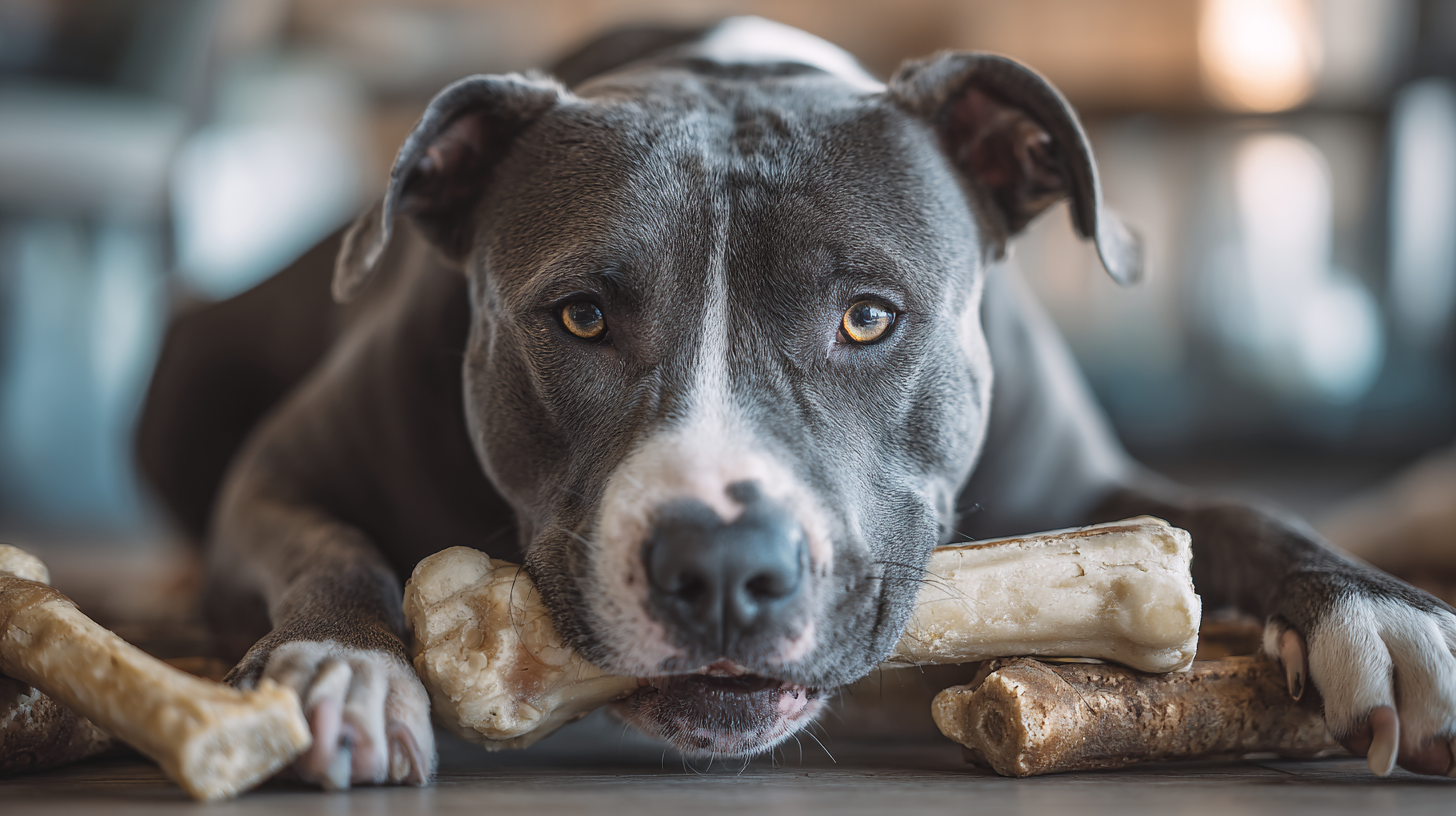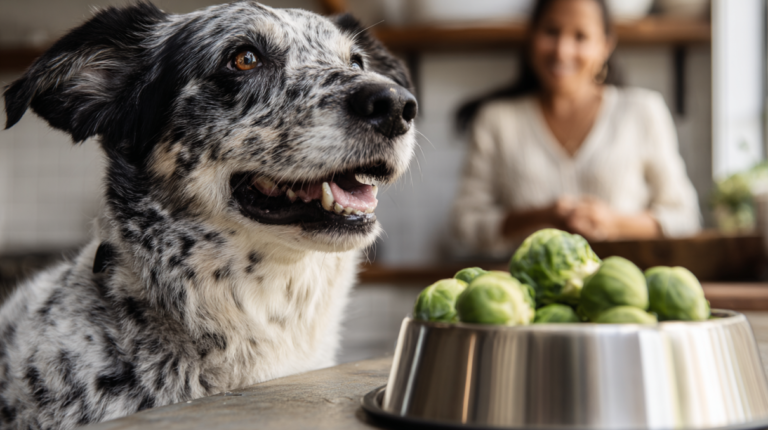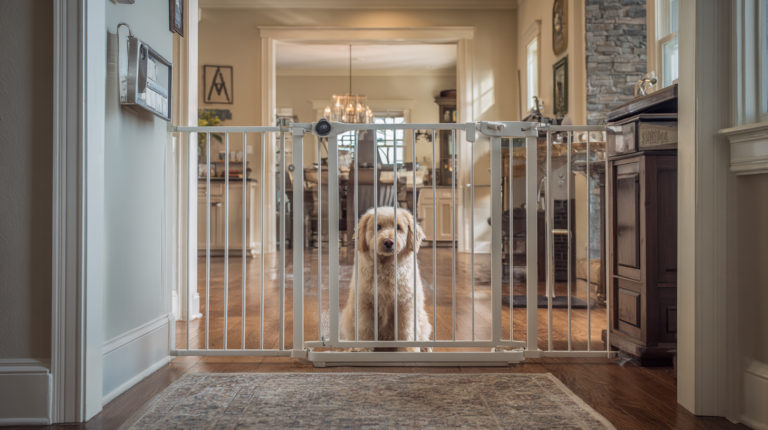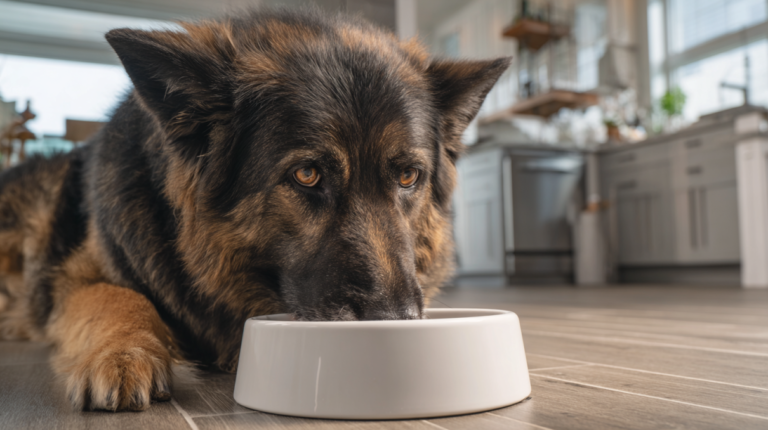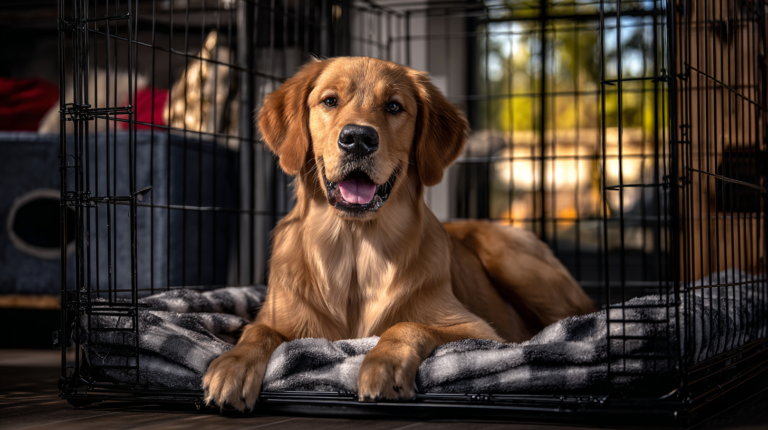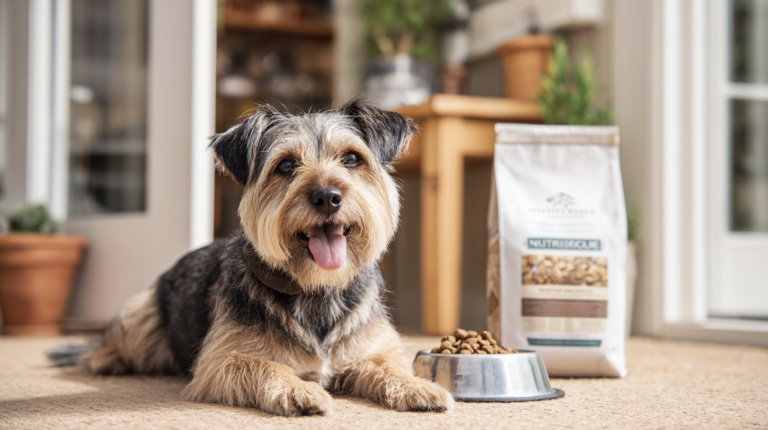Discover 6 powerful types of dog bones for healthy chewing. Expert guide to safe bone choices, benefits, and warnings every pet owner needs to know.
Table of Contents
Did you know that 68% of dog owners give their pets bones regularly, yet only 23% understand which types are actually safe? This startling statistic from the American Veterinary Medical Association reveals a concerning gap in pet owner knowledge that could put our beloved companions at risk.
Dog bones serve as more than just treats – they’re essential tools for dental health, mental stimulation, and satisfying your dog’s natural chewing instincts. However, choosing the wrong type can lead to serious health complications, from broken teeth to life-threatening intestinal blockages.
As a trusted resource for pet wellness, we’re here to guide you through the complex world of dog bones. Whether you’re a first-time pet owner or an experienced dog parent, understanding the differences between bone types, their benefits, and potential risks is crucial for your pet’s safety and happiness.
In this comprehensive guide, we’ll explore six powerful types of dog bones that promote healthy chewing, discuss safety considerations, and provide expert recommendations to help you make informed decisions for your furry friend’s well-being.
Understanding the Importance of Safe Dog Bones

Dog bones play a vital role in canine health and behavior. Beyond satisfying the instinctual need to chew, quality bones provide numerous benefits that contribute to your pet’s overall well-being.
Chewing is a fundamental behavior for dogs, serving multiple purposes from puppyhood through their senior years. When dogs chew on appropriate bones, they naturally clean their teeth, reducing plaque buildup and promoting healthier gums. This mechanical action helps prevent dental disease, which affects over 80% of dogs by age three according to the American Veterinary Dental College.
Mental stimulation is another crucial benefit of proper bone chewing. Dogs that lack adequate mental enrichment often develop destructive behaviors, excessive barking, or anxiety issues. A high-quality bone can provide hours of focused activity, helping to tire your dog mentally and reduce problematic behaviors.
The key lies in understanding that not all bones are created equal. Raw bones, cooked bones, and synthetic alternatives each carry different risk profiles and benefits. Making the right choice depends on your dog’s size, age, chewing habits, and individual health considerations.
The 6 Most Powerful Types of Dog Bones for Healthy Chewing
1. Raw Beef Bones – The Gold Standard
Raw beef bones represent the most natural and widely recommended option among veterinary professionals. These bones retain their structural integrity while providing maximum nutritional benefits.
Marrow bones from beef cattle offer the perfect combination of safety and satisfaction. The dense outer bone provides a challenging chewing experience, while the nutrient-rich marrow inside delivers essential fatty acids and minerals. These bones are particularly suitable for medium to large dogs with strong jaws.
Knuckle bones provide another excellent raw option, especially for dogs who enjoy a more manageable chewing experience. The cartilage and connective tissue attached to these bones offer additional nutritional value while being gentler on teeth than harder alternatives.
When selecting raw beef bones, always choose bones that are appropriately sized for your dog. A good rule of thumb is to select bones that are larger than your dog’s mouth to prevent swallowing hazards. Fresh bones should be refrigerated and used within three days of purchase.
Safety considerations: Always supervise your dog when chewing raw bones, and remove any small fragments that may break off. Some dogs may experience digestive upset when first introduced to raw bones, so start with shorter chewing sessions.
2. Bully Sticks – The Digestible Favorite
Bully sticks have gained tremendous popularity among pet owners seeking a safe, digestible alternative to traditional bones. Made from dried bull pizzle, these natural chews provide excellent dental benefits while being completely digestible.
The fibrous texture of bully sticks naturally scrapes plaque from teeth as dogs chew, promoting dental health without the risk of splintering. Unlike cooked bones, bully sticks soften slightly as dogs chew, reducing the likelihood of tooth damage.
Quality considerations are crucial when selecting bully sticks. Look for single-ingredient products from reputable manufacturers who source from grass-fed cattle. Avoid products with artificial preservatives, colors, or flavors that may cause digestive issues.
Bully sticks are particularly beneficial for dogs with sensitive stomachs or those prone to digestive upset. The high protein content supports muscle development while providing satisfying chewing action that can last for hours.
Expert tip: Choose appropriately sized bully sticks for your dog’s breed and chewing intensity. Puppies and smaller dogs should receive thinner sticks, while large, aggressive chewers need thick, braided, or extra-long varieties.
3. Antler Chews – Nature’s Dental Tool
Deer and elk antlers have emerged as popular long-lasting chew options that provide excellent dental benefits. These naturally shed antlers offer a renewable, eco-friendly alternative to traditional bones.
Split antlers expose the softer inner core, making them more appealing to dogs while still providing substantial chewing resistance. The porous interior contains minerals like calcium and phosphorus that support bone health.
Whole antlers provide maximum durability for heavy chewers but require careful size selection to prevent tooth damage. These are best suited for dogs with moderate chewing habits who enjoy working on a chew over extended periods.
The natural hardness of antlers helps remove tartar and plaque buildup while satisfying your dog’s chewing instincts. Unlike synthetic chews, antlers don’t contain artificial additives or preservatives that might cause allergic reactions.
Important considerations: Antlers are extremely hard and may cause tooth fractures in some dogs. Monitor your pet closely during initial use and discontinue if you notice any signs of tooth damage or excessive wear.
4. Himalayan Yak Chews – The Protein Powerhouse
Himalayan yak chews represent an ancient tradition of preserving yak and cow milk into long-lasting, nutritious treats. These rock-hard chews gradually soften as dogs work on them, making them suitable for dogs of various sizes and chewing intensities.
The production process involves boiling yak milk with lime juice and salt, then smoking and drying the resulting cheese for several weeks. This creates a dense, protein-rich chew that can last for weeks or even months depending on your dog’s chewing habits.
Nutritional benefits include high protein content (typically 65-70%), essential amino acids, and calcium. The low-fat content makes these chews suitable for dogs on restricted diets or those prone to pancreatitis.
Unique feature: When yak chews become small enough to pose a swallowing hazard, they can be microwaved for 30-60 seconds to create a puffed, crunchy treat that eliminates waste and provides a final satisfying snack.
These chews are particularly beneficial for dogs with food sensitivities, as they typically contain only three ingredients: yak milk, cow milk, and lime juice.
5. Freeze-Dried Bones – The Convenient Option
Freeze-dried bones offer the benefits of raw bones with extended shelf life and convenience. The freeze-drying process removes moisture while preserving the bone’s structural integrity and nutritional value.
Beef trachea and chicken necks are popular freeze-dried options that provide excellent dental benefits while being completely digestible. The freeze-drying process concentrates nutrients while eliminating harmful bacteria that might be present in raw bones.
These bones are particularly suitable for pet owners who want to provide natural chewing experiences without the mess and storage requirements of raw bones. They can be stored at room temperature and don’t require refrigeration.
Texture benefits: Freeze-dried bones maintain a satisfying crunch that dogs love while being gentler on teeth than raw bones. The dehydration process creates a honeycomb-like internal structure that provides interesting textures and flavors.
Travel-friendly: These bones are excellent for travel, camping, or situations where fresh bones aren’t practical. They pack easily and don’t require special storage conditions.
6. Synthetic Bones – The Engineered Solution
High-quality synthetic bones have evolved significantly, offering safe alternatives that mimic the benefits of natural bones without associated risks. Modern synthetic options are designed to provide appropriate hardness levels while being completely digestible.
Nylon bones infused with natural flavors provide long-lasting chewing satisfaction while being designed to wear down gradually without splintering. Advanced formulations include dental ridges and textures that help clean teeth as dogs chew.
Composite bones made from compressed rawhide alternatives offer a middle ground between natural and synthetic options. These products break down safely when chewed and often include added vitamins and minerals.
Rubber-based bones with treat-dispensing capabilities provide mental stimulation along with chewing satisfaction. High-quality rubber formulations are durable enough for heavy chewers while being gentle on teeth and gums.
Innovation in synthetic bones: Modern synthetic bones often include beneficial ingredients like glucosamine for joint health, probiotics for digestive wellness, or specially formulated compounds that help freshen breath.
Essential Safety Guidelines for Dog Bone Selection
Selecting the right bone requires careful consideration of multiple factors to ensure your dog’s safety and enjoyment. Understanding these guidelines can prevent serious health complications and ensure positive chewing experiences.
Size appropriateness is the most critical factor in bone selection. Bones should be large enough that your dog cannot swallow them whole, yet not so large that they cause jaw strain. A properly sized bone should be wider than your dog’s mouth at its narrowest point.
Supervision requirements vary depending on the bone type and your dog’s chewing habits. New bones should always be introduced under direct supervision to assess your dog’s reaction and chewing style. Some dogs may require constant supervision, while others can safely enjoy certain bones independently.
Individual assessment is crucial because every dog has unique chewing patterns and preferences. Factors to consider include your dog’s age, dental health, previous chewing experiences, and any known food sensitivities or allergies.
Replacement timing prevents safety hazards from worn-down bones. Establish clear guidelines for when to remove bones based on size reduction, wear patterns, or time limits. Most experts recommend removing bones when they become small enough to swallow or when sharp edges develop.
Common Mistakes Pet Owners Make with Dog Bones
Understanding common mistakes can help you avoid dangerous situations and ensure your dog receives maximum benefits from their chewing experiences.
Cooked bone dangers represent one of the most serious mistakes pet owners make. Cooked bones become brittle and can splinter into sharp fragments that cause internal injuries. This includes all cooked bones, regardless of size or type – from chicken bones to large beef bones.
Inappropriate sizing leads to numerous emergency veterinary visits each year. Bones that are too small can become lodged in the throat or digestive tract, while oversized bones may cause jaw injuries or tooth damage from excessive force.
Inadequate supervision contributes to many bone-related accidents. Even safe bones can become hazardous if dogs are allowed to chew them down to dangerous sizes or if complications arise during chewing sessions.
Ignoring individual needs is another common oversight. What works for one dog may be completely inappropriate for another. Factors like age, health status, and chewing intensity must be considered when selecting bones.
Storage mistakes can turn safe bones into health hazards. Improper storage of raw bones can lead to bacterial contamination, while leaving bones out too long can result in spoilage or attracting pests.
Warning Signs Every Pet Owner Should Know
Recognizing warning signs during and after bone chewing can prevent serious health complications and ensure prompt veterinary intervention when necessary.
Immediate concerns during chewing sessions include excessive drooling, pawing at the mouth, difficulty swallowing, or signs of distress. These symptoms may indicate that a bone fragment has become lodged in the mouth or throat.
Digestive warning signs that may appear hours or days after chewing include vomiting, diarrhea, loss of appetite, lethargy, or straining during bowel movements. These symptoms could indicate intestinal blockage or other serious complications.
Dental damage indicators include visible cracks in teeth, excessive bleeding from gums, reluctance to chew, or sensitivity when touching the mouth area. Some tooth damage may not be immediately apparent but can lead to serious complications if left untreated.
Behavioral changes such as sudden aggression around food, reluctance to eat, or changes in typical chewing patterns may indicate pain or discomfort related to bone consumption.
Emergency situations requiring immediate veterinary attention include difficulty breathing, continuous vomiting, inability to defecate, severe abdominal pain, or any signs of choking or distress.
When to Consult Your Veterinarian
Professional veterinary guidance is essential for making informed decisions about your dog’s chewing habits and bone selection. Certain situations require expert evaluation to ensure your pet’s safety and well-being.
Pre-existing conditions that may affect bone safety include dental disease, digestive disorders, previous blockage episodes, or any ongoing health issues. Your veterinarian can assess whether bone chewing is appropriate for your dog’s specific situation.
Breed considerations may influence bone recommendations, as some breeds have higher risks for certain complications. Brachycephalic breeds (flat-faced dogs) may have increased choking risks, while small breeds may be more susceptible to blockages.
Age-related factors require professional evaluation, particularly for very young puppies or senior dogs. Puppies may need softer options to protect developing teeth, while older dogs may require easier-to-digest alternatives.
Dietary restrictions or special nutritional needs may limit bone options. Dogs with kidney disease, pancreatitis, or other conditions may require specific types of bones or may need to avoid bones entirely.
Regular dental checkups help identify potential issues before they become serious problems. Your veterinarian can assess tooth wear, gum health, and overall oral condition to recommend appropriate chewing options.
Expert Tips for Maximizing Bone Benefits
Implementing expert strategies can enhance the benefits your dog receives from bone chewing while minimizing risks and ensuring positive experiences.
Rotation strategy prevents boredom and ensures balanced nutrition. Rotating between different types of safe bones keeps your dog interested while providing varied textures and nutritional benefits.
Preparation techniques can enhance safety and appeal. Freezing bones can provide additional cooling relief for teething puppies, while slight warming can enhance natural flavors for picky eaters.
Timing considerations optimize the benefits of bone chewing. Providing bones during natural chewing times (often evening hours) can help establish positive routines and reduce destructive behaviors.
Environmental factors influence chewing experiences. Providing bones in quiet, comfortable spaces allows dogs to focus on chewing while reducing anxiety or guarding behaviors.
Monitoring progress helps identify patterns and preferences. Keeping track of which bones your dog enjoys and how they respond helps refine future selections.
Complementary care enhances bone benefits through additional dental hygiene practices. Regular brushing, dental chews, and professional cleanings work together with bone chewing to maintain optimal oral health.
Training integration can incorporate bone time into broader behavioral training programs. Using bones as high-value rewards or incorporating them into settling exercises can enhance their behavioral benefits.
Quality assessment ensures you’re providing the best possible products. Research manufacturers, read reviews, and consult with pet professionals to identify high-quality options.
Debunking Common Dog Bone Myths
Several persistent myths about dog bones can lead to dangerous choices and missed opportunities for canine health benefits. Understanding the facts helps pet owners make informed decisions.
Myth: All natural bones are safe – Reality: Natural doesn’t always mean safe. Cooked bones, regardless of their natural origin, pose serious splintering risks. Even some raw bones can be inappropriate depending on size, hardness, and individual dog factors.
Myth: Rawhide is always dangerous – Reality: While traditional rawhide has legitimate concerns, modern rawhide alternatives and properly manufactured rawhide products can be safe when used appropriately. Quality and supervision are key factors.
Myth: Harder bones are always better – Reality: Excessively hard bones can cause tooth fractures and damage. The ideal bone provides appropriate resistance without being so hard that it risks dental injury.
Myth: Bones should be taken away when they get small – Reality: While this is generally true, the definition of “too small” depends on the bone type and your dog’s size. Some bones are designed to be consumed entirely when they reach a certain size.
Educational Table
Markdown Version:
| Bone Type | Safety Level | Best For | Duration | Digestibility | Key Benefits |
|---|---|---|---|---|---|
| Raw Beef Bones | High (supervised) | Medium-Large Dogs | 1-3 hours | Partially | Dental health, natural nutrition |
| Bully Sticks | Very High | All sizes | 30min-2hours | Fully | Digestible, high protein |
| Antler Chews | Medium | Moderate chewers | Weeks-Months | No | Long-lasting, natural minerals |
| Yak Chews | High | All sizes | Days-Weeks | Fully | High protein, low fat |
| Freeze-Dried | High | All sizes | 1-4 hours | Fully | Convenient, nutritious |
| Synthetic | Variable | All sizes | Variable | Mostly | Engineered safety, consistent |
FAQ Section :
Q: Are dog bones safe for puppies?
A: Puppies can safely enjoy appropriate bones with proper supervision. Choose softer options like bully sticks or appropriately sized raw bones. Avoid hard bones that could damage developing teeth, and always supervise chewing sessions.
Q: How often should I give my dog bones?
A: Most dogs can safely enjoy bones 2-3 times per week, depending on the bone type and your dog’s individual needs. Raw bones may be given less frequently, while digestible options like bully sticks can be offered more regularly.
Q: Can small dogs safely chew bones?
A: Yes, small dogs can safely chew bones when properly sized options are selected. Choose bones specifically designed for smaller breeds, and avoid bones that are too large or hard for their jaw strength.
Q: What should I do if my dog swallows a bone fragment?
A: Monitor your dog closely for signs of distress, difficulty breathing, or digestive upset. Contact your veterinarian immediately if you notice any concerning symptoms. Never attempt to induce vomiting without professional guidance.
Q: Are cooked bones ever safe for dogs?
A: No, cooked bones should never be given to dogs. The cooking process makes bones brittle and prone to splintering, which can cause serious internal injuries. Always choose raw or specially processed bones designed for dogs.
Q: How do I know if a bone is too hard for my dog?
A: If you can’t make an indentation with your thumbnail, the bone may be too hard. Watch for signs of excessive tooth wear, broken teeth, or reluctance to chew. When in doubt, choose softer alternatives.
Q: Can bones replace regular dental care?
A: While bones provide excellent dental benefits, they shouldn’t replace regular dental care. Combine bone chewing with regular brushing, dental chews, and professional veterinary cleanings for optimal oral health.
Conclusion
Choosing the right dog bones for your furry companion doesn’t have to be overwhelming when you understand the key principles of safety, quality, and individual needs. The six powerful types of bones we’ve explored – raw beef bones, bully sticks, antler chews, yak chews, freeze-dried options, and quality synthetic alternatives – each offer unique benefits for different dogs and situations.
Remember that successful bone selection requires consideration of your dog’s size, age, chewing intensity, and individual health factors. What works perfectly for one dog may not be suitable for another, making careful observation and sometimes trial-and-error necessary parts of the process.
The most important takeaway is that supervision and quality matter more than any specific bone type. Always choose products from reputable manufacturers, supervise initial chewing sessions, and maintain regular communication with your veterinarian about your dog’s chewing habits and dental health.
By following the guidelines and expert recommendations in this comprehensive guide, you’re well-equipped to provide your dog with safe, beneficial chewing experiences that support their dental health, mental well-being, and natural instincts.
For more expert pet care tips and product recommendations, visit BlithePet.com your trusted source for pet wellness.
Have a similar experience with your pet? Share it in the comments below! Don’t forget to check out our other helpful guides at BlithePet.com.

